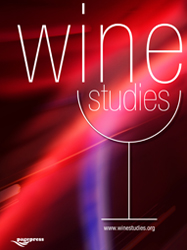Ver ítem
- xmlui.general.dspace_homeCentros Regionales y EEAsCentro Regional Mendoza - San JuanEEA MendozaArtículos científicosxmlui.ArtifactBrowser.ItemViewer.trail
- Inicio
- Centros Regionales y EEAs
- Centro Regional Mendoza - San Juan
- EEA Mendoza
- Artículos científicos
- Ver ítem
Multi-method sensory approach to describe the effect of microwave-assisted extraction and addition of stems on the mouthfeel sensations of Bonarda wines from Mendoza (Argentina)
Resumen
The Bonarda variety has been used as a base for common red wines due to its contribution to color and low level of astringency as a consequence of its relative low tannin concentration. The use of MicrowaveAssisted Extraction (MWE) accelerates the maceration process, improving the diffusion of grape compounds into the must, while the stems addition during maceration/fermentation constitutes a sustainable technological alternative for increasing tannins at
[ver mas...]
The Bonarda variety has been used as a base for common red wines due to its contribution to color and low level of astringency as a consequence of its relative low tannin concentration. The use of MicrowaveAssisted Extraction (MWE) accelerates the maceration process, improving the diffusion of grape compounds into the must, while the stems addition during maceration/fermentation constitutes a sustainable technological alternative for increasing tannins at no additional cost. The present experimental design consisted of ten treatments (in triplicate), obtained combining both technologies. Two maceration strategies were applied: Control must (C) which was not treated, and must treated with microwaved assisted extraction after grape crushing. These were combined with five Stem-contact conditions (ST): C without ST, 50% ST addition, addition of 50% ST previously treated with MWE, 100% ST addition, and addition of 100% ST previously treated with MWE. The effect of the winemaking technologies on wine mouthfeel sensations was evaluated by different (static and dynamic) sensory methods: Sorting Task; Check-All-That-Applies (CATA) with different textiles as trans-modal references; and Temporal Dominance of Sensations (TDS). CATA evaluation revealed that three of the wine samples differed in their description. These were then dynamically described showing subtle differences in their TDS curves. The sequentiality of dominant sensations showed that the MWE treatment of the grapes and the combination ST with MWE did not modify dramatically mouthfeel sensations in Bonarda wines
[Cerrar]

Autor
Alvarez Gaona, Izmari Jasel;
Fanzone, Martín Leandro;
Sari, Santiago Eduardo;
Catania, Anibal Alejandro;
Coronado, Ignacio Leon;
Jofre, Viviana Patricia;
Zamora, Maria Clara;
Galmarini, Mara V.;
Fuente
Wine Studies 7 : 10374. (2022)
Fecha
2022-11-25
Editorial
PAGEPress
ISSN
2039-4446
Formato
pdf
Tipo de documento
artículo
Palabras Claves
Derechos de acceso
Abierto
 Excepto donde se diga explicitamente, este item se publica bajo la siguiente descripción: Creative Commons Attribution-NonCommercial-ShareAlike 2.5 Unported (CC BY-NC-SA 2.5)
Excepto donde se diga explicitamente, este item se publica bajo la siguiente descripción: Creative Commons Attribution-NonCommercial-ShareAlike 2.5 Unported (CC BY-NC-SA 2.5)


